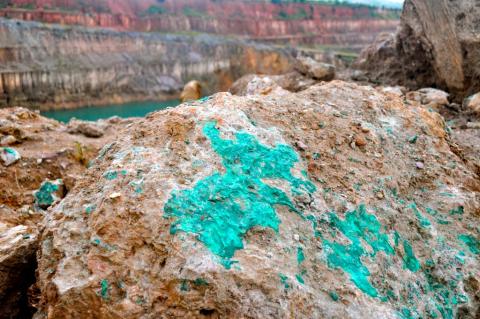
The yellow brick road through Lomé
Exports generate significant revenue for the Togolese economy, so there is a great demand for transparency. Though not a major gold producer, Togo exported 21,000 kg of gold in 2013. According to the recently published 2013 EITI Report, gold accounted for 24% of the country’s mining exports in 2013, an increase from 17% of total exports in 2012. This reflected an increase in revenues from gold of USD 7.5million in 2012, to USD 43million in 2013.
The Berne Declaration claims that most of the gold merely transits through Togo. It comes from neighbouring countries such as Burkina Faso on its way to Switzerland, which is one of Togo’s main export partners. To increase transparency, Swiss civil society organisations have demanded greater accountability in ensuring stricter controls of the supply chain. In Togo, the 2013 EITI Report makes recommendations to improve production and export monitoring by the government, in a bid to guarantee collection of the appropriate taxes.
‘Made in Togo’
Togo exports an even greater value of phosphate than gold. It has vast phosphate reserves including a carbonated phosphate deposit with a life expectancy of more than 100 years. In 2013, exports from phosphates alone accounted for 27% of the country’s total exports (USD 49m), though this was a significant decrease from 47% of total exports in 2012 (USD 97m). This fall in export revenue was mainly caused by falling phosphate prices on the international market. The price fell from USD 499 per metric ton in December 2012, to USD 369 per metric ton in December 2013 (US Diammonium Phosphate Spot Price Gulf). The production of clinker cement, dolomitic marbles, iron, limestone and manganese also make a significant contribution to the GDP and export earnings.
Making the most of exports
The 2013 EITI Report highlights that phosphate exports from the national Togolese phosphate company (SNPT) could not been confirmed by the country’s customs authorities (CDDI). Only the SNPT has access to the country’s phosphate production figures. The 2013 EITI Report made a recommendation that revenue intake could be significantly improved through an upgrade of the CDDI’s computerised revenue management system. If CDDI had the means to monitor quantities as well as export revenue, it would have more accurate information to charge appropriate taxes.
The report notes that better coordination between the CDDI and the General Directorate of the Ministry of Mines and Geology (DGMG) could ensure that taxes are settled in a timely and efficient manner. One way to do this would be to reduce the number of royalty payments on iron that are based on declarations by companies. The active presence of DGMG officers on the ground could lead to the submission of regular activity reports on production and the corresponding royalties, as provided for in the national Mining Code.
‘First come, first served’ policy
Togo’s ‘first come, first served’ policy, which grants the rights to a block to the first applicant that has fulfilled the requirements, has been difficult to implement. For example, exploration and artisanal mining permits have been allocated to more than one company for the same area. The 2013 EITI Report notes that an out-of-date mining cadastre system has not been able to monitor license allocation, contract renewals and the withdrawal of a license.
Improvements are being made to modernise the cadastre system to allow for the effective and transparent management of mining rights. The 2013 EITI Report made a recommendation that the modern system be compatible with other government systems. This will equip Togo with a better system to collect geological, mineral, environment and cadaster information.
For more information about the Togo EITI, visit the country page on the EITI website, the Togo EITI website or contact Country Officer Gisela Granado.
Related content



